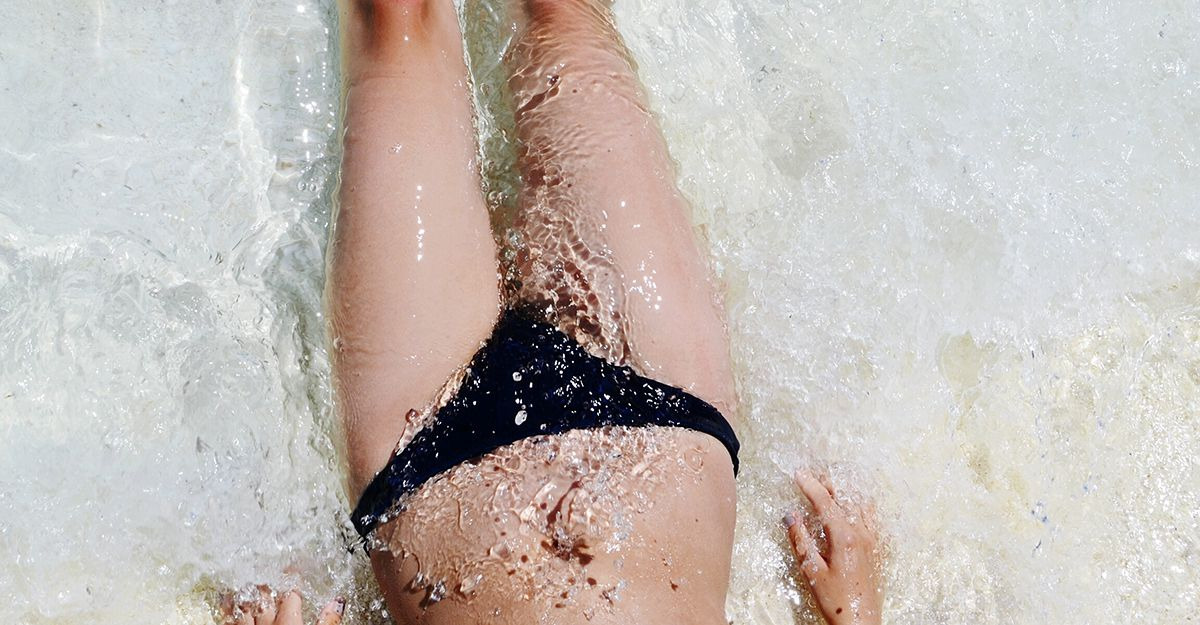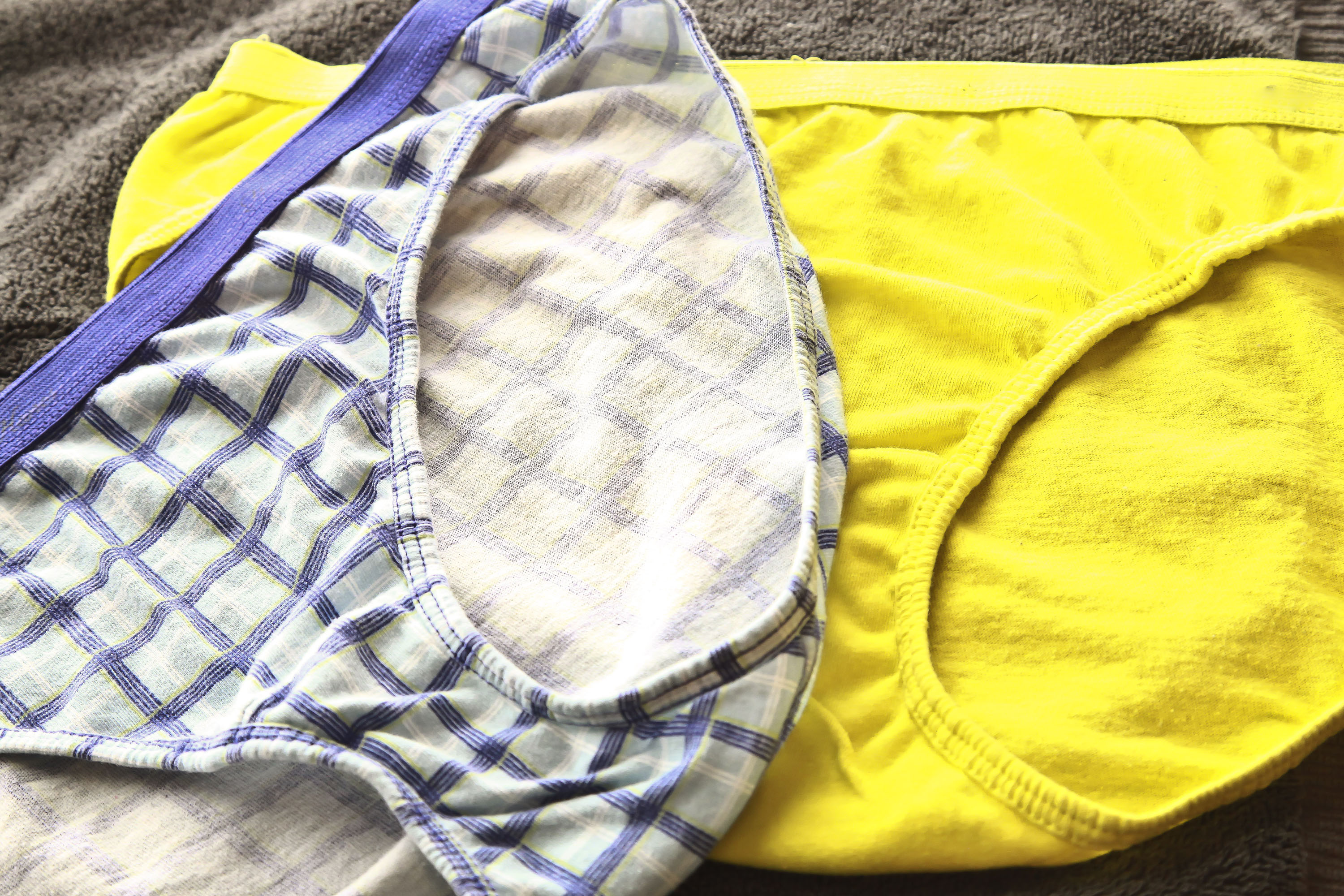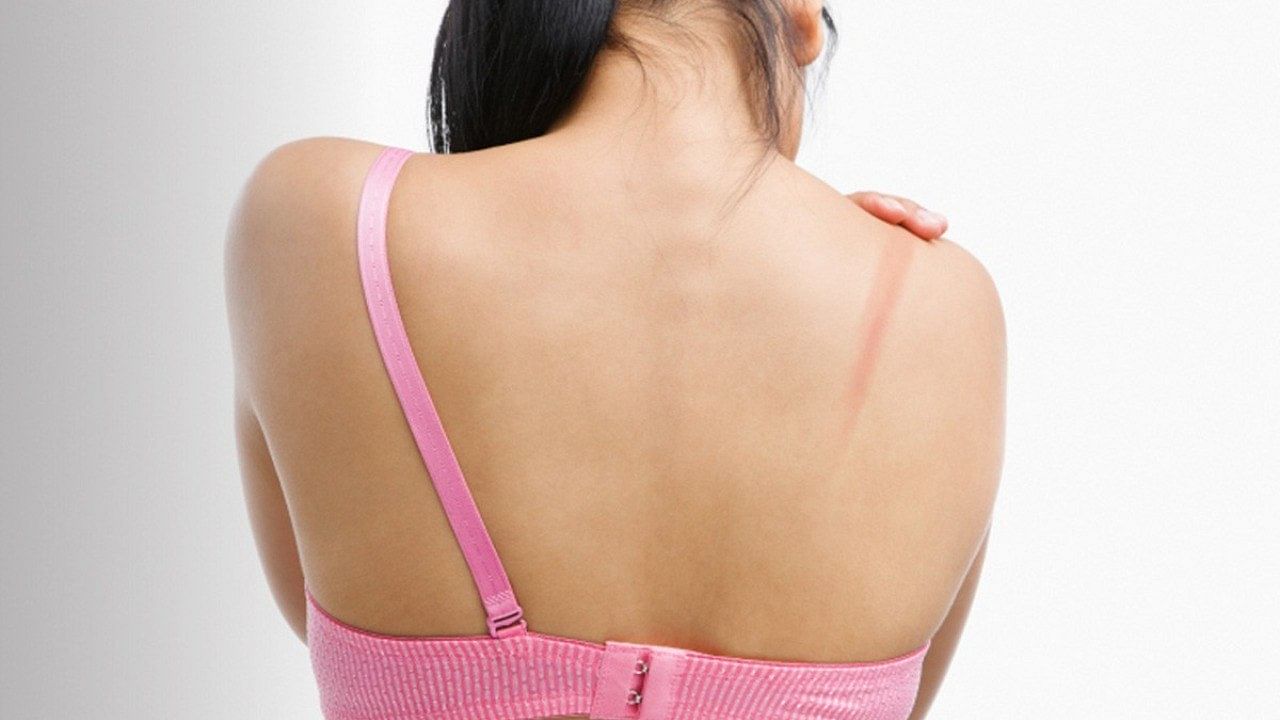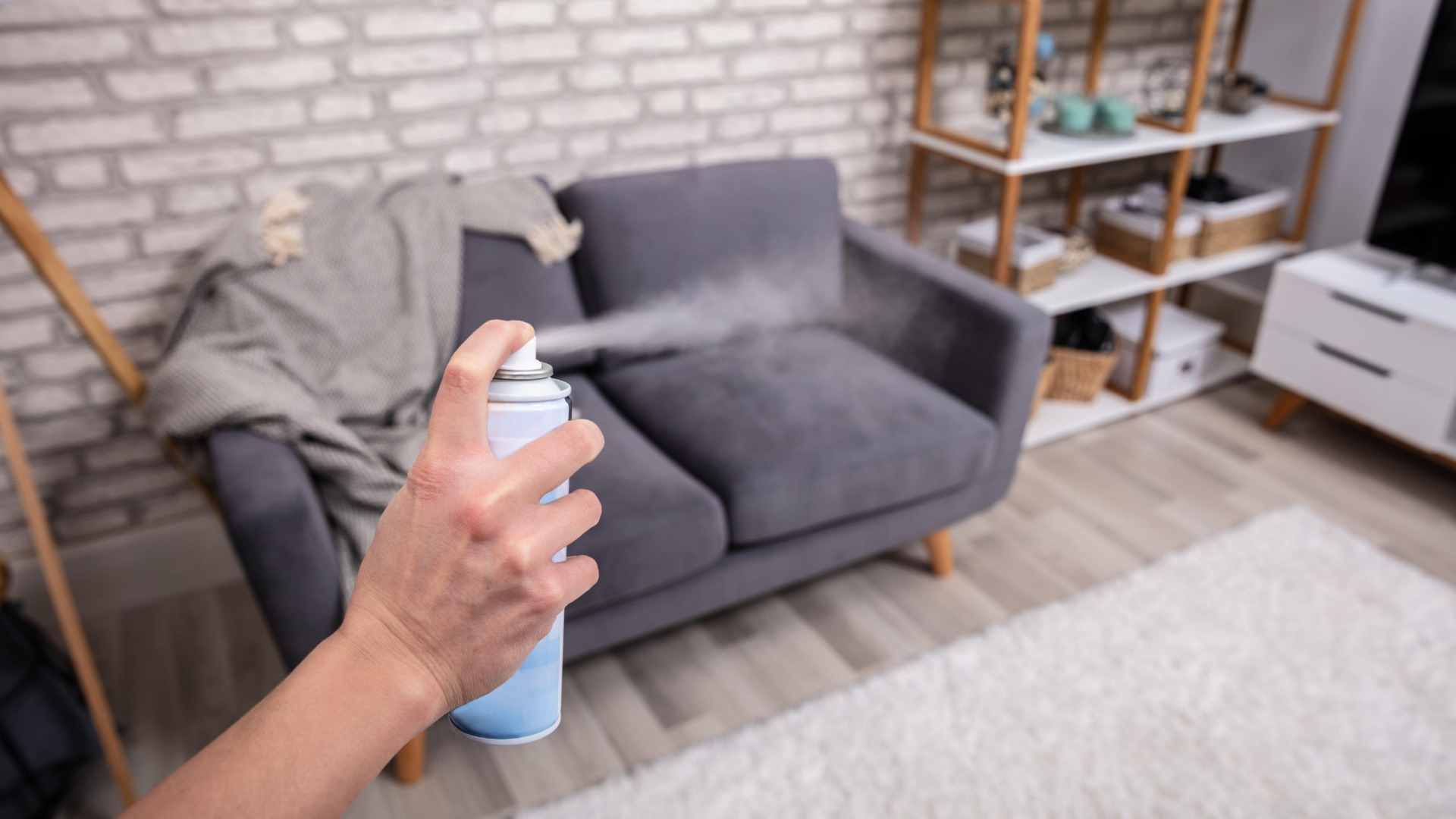Home>How-to Guides>For Women>How To Get Rid Of Dark Spots On Bikini Area


For Women
How To Get Rid Of Dark Spots On Bikini Area
Modified: August 5, 2023
Discover effective ways for women to eliminate dark spots on their bikini area. Get the confidence you deserve with our proven techniques.
(Many of the links in this article redirect to a specific reviewed product. Your purchase of these products through affiliate links helps to generate commission for Under-tec.com, at no extra cost. Learn more)
Table of Contents
Introduction
Welcome to your ultimate guide on how to get rid of dark spots on the bikini area. Dark spots on the bikini area can be a common concern for many women, often causing self-consciousness and discomfort. Whether these dark spots are caused by hyperpigmentation, ingrown hairs, or other factors, there are effective remedies and treatments available to help you achieve a smoother, more even-toned bikini area.
Dark spots, also known as hyperpigmentation, occur when the skin produces an excess amount of melanin, the pigment that gives color to our skin. This excess melanin can be triggered by various factors, such as hormonal imbalances, shaving or waxing, friction from tight clothing, or exposure to sunlight without proper protection. Dark spots on the bikini area can range in color from light brown to dark black and can vary in size and shape.
The good news is that dark spots on the bikini area can be treated effectively using a combination of home remedies, over-the-counter treatments, and professional procedures. In this comprehensive guide, we will explore these different approaches and help you find the best solution for your specific needs.
It’s important to note that while these treatments can help fade and reduce the appearance of dark spots, they may not completely eliminate them. The results can vary depending on the individual’s skin type, the severity of the dark spots, and the consistency of the treatment.
So, if you’re ready to say goodbye to those stubborn dark spots on your bikini area, let’s dive into the various causes of dark spots and explore the effective treatments and preventive measures you can take to achieve a clearer and more confident bikini area.
Understanding Dark Spots on Bikini Area
Before diving into the remedies and treatments, it’s essential to understand what causes dark spots to appear on the bikini area. Dark spots, also known as hyperpigmentation, are areas of skin that have a higher concentration of melanin, the pigment responsible for the color of our skin, hair, and eyes.
Hyperpigmentation on the bikini area can occur for various reasons. One common cause is post-inflammatory hyperpigmentation, which can happen as a result of irritation, inflammation, or trauma to the skin. This can include shaving, waxing, or using harsh depilatory creams, all of which can lead to dark spots on the bikini area.
Hormonal changes can also contribute to the development of dark spots. For example, during pregnancy or while taking certain hormonal medications, women may experience an increase in melanin production, resulting in darker areas on the skin.
Another common cause of dark spots is friction and constant rubbing of the skin. Wearing tight clothing or underwear that constantly rub against the bikini area can lead to hyperpigmentation over time.
Additionally, exposure to the sun’s harmful UV rays without proper protection can stimulate the production of melanin, leading to the formation of dark spots on the bikini area.
It’s important to note that dark spots on the bikini area may not always be a cause for concern and can be a natural variation in skin pigmentation. However, if you notice any changes in size, color, or texture of the dark spots, or if they are accompanied by other symptoms such as itching or pain, it is advisable to consult a dermatologist for a proper diagnosis.
Now that we have a better understanding of what causes dark spots on the bikini area, let’s explore the various remedies and treatments that can help fade and reduce their appearance.
Causes of Dark Spots on Bikini Area
Dark spots on the bikini area can be caused by a variety of factors. Understanding these causes is crucial in effectively addressing and preventing their occurrence. Here are some common causes of dark spots on the bikini area:
1. Shaving or Waxing: One of the primary culprits behind dark spots is the hair removal methods employed in the bikini area. Shaving or waxing can lead to irritation and inflammation, triggering post-inflammatory hyperpigmentation. When the skin is irritated, it produces more melanin, resulting in darker spots.
2. Ingrown Hairs: When hair follicles become blocked or hair grows back into the skin, it can lead to the formation of ingrown hairs. These can cause inflammation and pigmentation changes, leading to dark spots in the affected areas.
3. Friction: Constant friction caused by tight clothing or underwear can lead to the development of dark spots on the bikini area. The constant rubbing of the skin can cause irritation and trigger the production of excess melanin.
4. Hormonal Changes: Fluctuations in hormones, such as those experienced during pregnancy, can contribute to the development of dark spots. The hormonal changes can stimulate an increase in melanin production, resulting in hyperpigmentation in the bikini area.
5. Sun Exposure: The ultraviolet (UV) rays from the sun can wreak havoc on our skin, leading to dark spots and sunspots. Failure to protect the bikini area from sunlight can intensify the production of melanin and darken the skin in that area.
6. Skin Conditions: Certain skin conditions, such as acne or eczema, can leave behind dark spots as a result of inflammation and post-inflammatory hyperpigmentation.
7. Genetics: Some individuals may be more prone to developing dark spots in the bikini area due to genetic factors. These individuals may have a higher concentration of melanin in their skin, making them more susceptible to hyperpigmentation.
By understanding the causes of dark spots on the bikini area, you can take proactive steps to minimize their occurrence and choose appropriate treatments to effectively address them. In the next sections, we will explore various home remedies, over-the-counter treatments, and professional procedures that can help fade and reduce the appearance of dark spots on the bikini area.
Common Home Remedies for Dark Spots
When it comes to addressing dark spots on the bikini area, there are several effective home remedies that you can try. These remedies are not only natural but also easily accessible. However, it’s important to note that results may vary depending on individual skin types and the severity of the dark spots. Here are some common home remedies that you can incorporate into your skincare routine:
1. Lemon Juice: Lemon juice is known for its natural bleaching properties. Apply freshly squeezed lemon juice to the dark spots on the bikini area using a cotton ball. Leave it on for about 15 minutes before rinsing it off. Regular use can help lighten the dark spots over time.
2. Aloe Vera: Aloe vera has soothing and healing properties that can help reduce the appearance of dark spots. Apply fresh aloe vera gel directly to the affected area and leave it on for 20-30 minutes before rinsing it off. Repeat this process daily for best results.
3. Apple Cider Vinegar: Apple cider vinegar contains alpha hydroxy acids (AHAs) that can help exfoliate the skin and fade dark spots. Mix equal parts of apple cider vinegar and water and apply it to the bikini area using a cotton ball. Leave it on for a few minutes before rinsing it off. Use caution and do a patch test first, as undiluted apple cider vinegar may cause irritation.
4. Turmeric: Turmeric has antioxidant and anti-inflammatory properties that can help lighten dark spots. Make a paste by mixing turmeric powder with milk or rose water. Apply the paste to the affected area and leave it on for 20 minutes before rinsing it off. Regular use can help diminish the appearance of dark spots.
5. Yogurt: Yogurt contains lactic acid, which has exfoliating properties that can help fade dark spots. Apply plain yogurt directly to the dark spots, leave it on for 15-20 minutes, and then rinse it off. Incorporating yogurt into your skincare routine a few times a week can help improve the overall appearance of the bikini area.
6. Potato Juice: Potato juice contains natural bleaching agents that can lighten dark spots. Extract the juice from a potato and apply it to the affected area using a cotton ball. Leave it on for 15-20 minutes before rinsing it off. Repeat this process regularly to see visible results.
7. Honey: Honey has moisturizing and healing properties that can help reduce the appearance of dark spots. Apply raw honey to the bikini area, leave it on for 15-20 minutes, and then rinse it off. Regular use can help promote a clearer and more even complexion.
Remember, consistency is key when using home remedies for dark spots on the bikini area. It’s important to note that individual results may vary, and it may take several weeks or months to see noticeable improvement. If you have sensitive skin or any skin allergies, it’s always advisable to do a patch test before applying these remedies to the entire bikini area. Let’s move on to the next section, where we’ll explore over-the-counter treatments for dark spots.
Over-the-Counter Treatments for Dark Spots
If home remedies don’t provide the desired results or you prefer a more targeted approach, over-the-counter treatments can be a great option for addressing dark spots on the bikini area. These treatments often contain active ingredients specifically formulated to lighten hyperpigmentation. Here are some common over-the-counter treatments you can consider:
1. Hydroquinone: Hydroquinone is a commonly used skin-lightening ingredient available in many over-the-counter products. It works by inhibiting the production of melanin, thus reducing the appearance of dark spots. When using hydroquinone, it’s important to follow the instructions and avoid excessive sun exposure, as this ingredient can make the skin more sensitive to sunlight.
2. Vitamin C Serums: Vitamin C is a powerful antioxidant that not only protects the skin from UV damage but also helps to lighten dark spots. Look for serums or creams that contain a high concentration of vitamin C to effectively fade hyperpigmentation over time.
3. Retinoids: Retinoids, such as retinol or adapalene, are derived from vitamin A and are known for their effectiveness in treating various skin concerns, including dark spots. They work by increasing cell turnover and promoting the growth of new, healthy skin cells. Over-the-counter retinoid products are available, but it’s important to start with a lower concentration and gradually increase as tolerated, as retinoids can cause skin irritation.
4. Kojic Acid: Kojic acid is a natural skin-lightening ingredient derived from mushrooms. It inhibits the production of melanin and can help fade dark spots. Look for products that contain kojic acid and incorporate them into your skincare routine to gradually diminish the appearance of hyperpigmentation.
5. Licorice Extract: Licorice extract is known for its skin brightening and anti-inflammatory properties. It can help fade dark spots and even out skin tone. Look for products that contain licorice extract and apply them regularly to the bikini area.
6. Alpha Hydroxy Acids (AHAs): AHAs, such as glycolic acid and lactic acid, are exfoliating agents that help remove dead skin cells, revealing brighter and more even-toned skin. Look for products that contain AHAs and use them according to the instructions to gradually reduce the appearance of dark spots on the bikini area.
When using over-the-counter treatments for dark spots, it’s important to follow the instructions provided and be patient. It can take several weeks or even months to see noticeable results. Additionally, it’s crucial to use sunscreen daily to protect the treated area from further damage and to minimize hyperpigmentation.
If over-the-counter treatments do not provide satisfactory results, or if you have severe hyperpigmentation, it may be appropriate to consider professional treatments, which we’ll explore in the next section.
Professional Treatments for Dark Spots
If you’re dealing with stubborn dark spots on the bikini area that haven’t responded to home remedies or over-the-counter treatments, professional treatments may be the next step. These treatments are performed by trained skincare professionals and can provide more targeted and intensive solutions. Here are some commonly used professional treatments for dark spots:
1. Chemical Peels: Chemical peels involve the application of a chemical solution to the skin, which exfoliates the top layer and stimulates collagen production. This helps to fade dark spots and improve overall skin tone. The strength of the peel can be adjusted based on the severity of the dark spots, and multiple sessions may be required for optimal results.
2. Laser Therapy: Laser therapy uses targeted beams of light energy to break down excess melanin and reduce the appearance of dark spots. This treatment can be customized to treat specific areas and can provide significant improvement in the appearance of hyperpigmentation. Several sessions may be needed, depending on the depth and severity of the dark spots.
3. Microdermabrasion: Microdermabrasion is a non-invasive procedure that involves exfoliating the skin using tiny crystals or a diamond-tipped wand. This helps to remove the outer layer of dead skin cells, revealing brighter and more evenly toned skin. Multiple sessions may be necessary to achieve desired results.
4. Intense Pulsed Light (IPL) Therapy: IPL therapy uses broad-spectrum light to target and break down excess melanin in the skin. It can effectively fade dark spots and improve overall skin tone. IPL therapy is often performed in a series of treatments for optimal results.
5. Cryotherapy: Cryotherapy involves the use of extreme cold to destroy excess pigmentation. Liquid nitrogen is applied to the targeted area, freezing and destroying the dark spots. This treatment may cause temporary redness or blistering, but the results can be significant.
6. Microneedling: Microneedling involves creating tiny punctures in the skin using a device with fine needles. This stimulates collagen production and allows for better penetration of topical products, including those that target dark spots. Multiple sessions may be required to achieve desired results.
When considering professional treatments, it’s important to consult with a qualified dermatologist or aesthetician who can assess your specific needs and recommend the most suitable treatment plan. They will take into account factors like your skin type, the severity of the dark spots, and any other underlying skin conditions.
It’s worth noting that professional treatments may require some downtime for recovery, and there may be potential risks and side effects associated with certain procedures. Therefore, it’s essential to thoroughly discuss your options, expectations, and any concerns with your skincare professional before proceeding.
Now that we’ve explored the various professional treatments available for dark spots, let’s delve into preventive measures that can help you avoid their recurrence.
Preventive Measures to Avoid Dark Spots
Prevention is key when it comes to avoiding the formation of dark spots on the bikini area. By taking proactive steps to protect your skin and minimize potential triggers, you can reduce the likelihood of developing hyperpigmentation. Here are some preventive measures to consider:
1. Sun Protection: Protecting your skin from the sun’s harmful UV rays is crucial in preventing dark spots. Apply a broad-spectrum sunscreen with an SPF of 30 or higher to the bikini area, even on cloudy days. Reapply every two hours and after swimming or sweating. Wearing sun-protective clothing, such as rash guards or UV-blocking cover-ups, can also provide additional protection.
2. Gentle Hair Removal: Avoid harsh methods of hair removal, such as rough shaving or aggressive waxing, which can cause irritation and trigger hyperpigmentation. Instead, opt for gentler hair removal techniques like using a sharp razor, practicing proper shaving techniques, or opting for professional waxing or laser hair removal under the guidance of an experienced technician.
3. Exfoliation: Regular exfoliation can help remove dead skin cells and prevent the build-up of debris that can contribute to dark spots. However, it’s important to use gentle exfoliants and avoid over-exfoliating, as this can cause skin irritation. Choose products with mild exfoliating agents, such as AHAs or enzymes, and incorporate exfoliation into your skincare routine once or twice a week.
4. Avoid Tight Clothing: Opt for loose-fitting clothing, especially in the bikini area, to minimize friction and reduce the risk of developing dark spots. Tight clothing can cause constant rubbing and irritation, leading to hyperpigmentation. Choose breathable fabrics that allow for proper airflow to the skin.
5. Moisturize Regularly: Keeping the bikini area well-moisturized can help maintain healthy skin and prevent dryness or irritation that can contribute to dark spots. Choose a gentle and hydrating moisturizer that is suitable for your skin type and apply it regularly after showering or bathing.
6. Maintain a Balanced Diet: A healthy diet rich in antioxidants and vitamins can contribute to overall skin health. Include plenty of fruits, vegetables, and foods high in vitamin C and E. These nutrients can help protect the skin from damage caused by free radicals and promote a brighter complexion.
7. Seek Professional Advice: If you have a history of dark spots or are particularly concerned about the appearance of your bikini area, consult with a dermatologist or skincare professional. They can assess your specific situation, provide personalized advice, and recommend the most suitable preventive measures based on your skin type and concerns.
By adopting these preventive measures into your daily routine, you can significantly reduce the risk of developing dark spots on the bikini area. However, if you do notice any changes or have persistent concerns, it’s always best to seek professional guidance for a proper evaluation and targeted treatment recommendations.
Now that you have a better understanding of preventive measures, let’s summarize the key points of this guide.
Conclusion
Dealing with dark spots on the bikini area can be frustrating, but with the right knowledge and approach, you can effectively address and minimize their appearance. Understanding the causes of dark spots, such as shaving, friction, hormonal changes, and sun exposure, is the first step towards finding the appropriate remedies and treatments.
Home remedies like lemon juice, aloe vera, and turmeric can be helpful in fading dark spots. Over-the-counter treatments containing ingredients like hydroquinone, vitamin C, and retinoids can provide more targeted solutions. If these options don’t yield the desired results, professional treatments such as chemical peels, laser therapy, and microdermabrasion can offer more intensive solutions.
Prevention is key in avoiding the formation of dark spots. Protecting the skin from the sun, using gentle hair removal methods, regular exfoliation, avoiding tight clothing, and maintaining a balanced diet can all play a role in preventing dark spots on the bikini area.
Remember, everyone’s skin is unique, and finding the right approach may require some trial and error. It’s important to consult with a dermatologist or skincare professional for personalized advice and treatment recommendations based on your specific needs.
By incorporating a combination of home remedies, over-the-counter treatments, professional interventions, and preventive measures, you can achieve a clearer and more even-toned bikini area. Embrace your natural beauty and feel confident in your skin, knowing that there are options available to address and prevent dark spots on the bikini area.
Now armed with this comprehensive guide, you can take control of your skincare journey and say goodbye to those stubborn dark spots once and for all.









